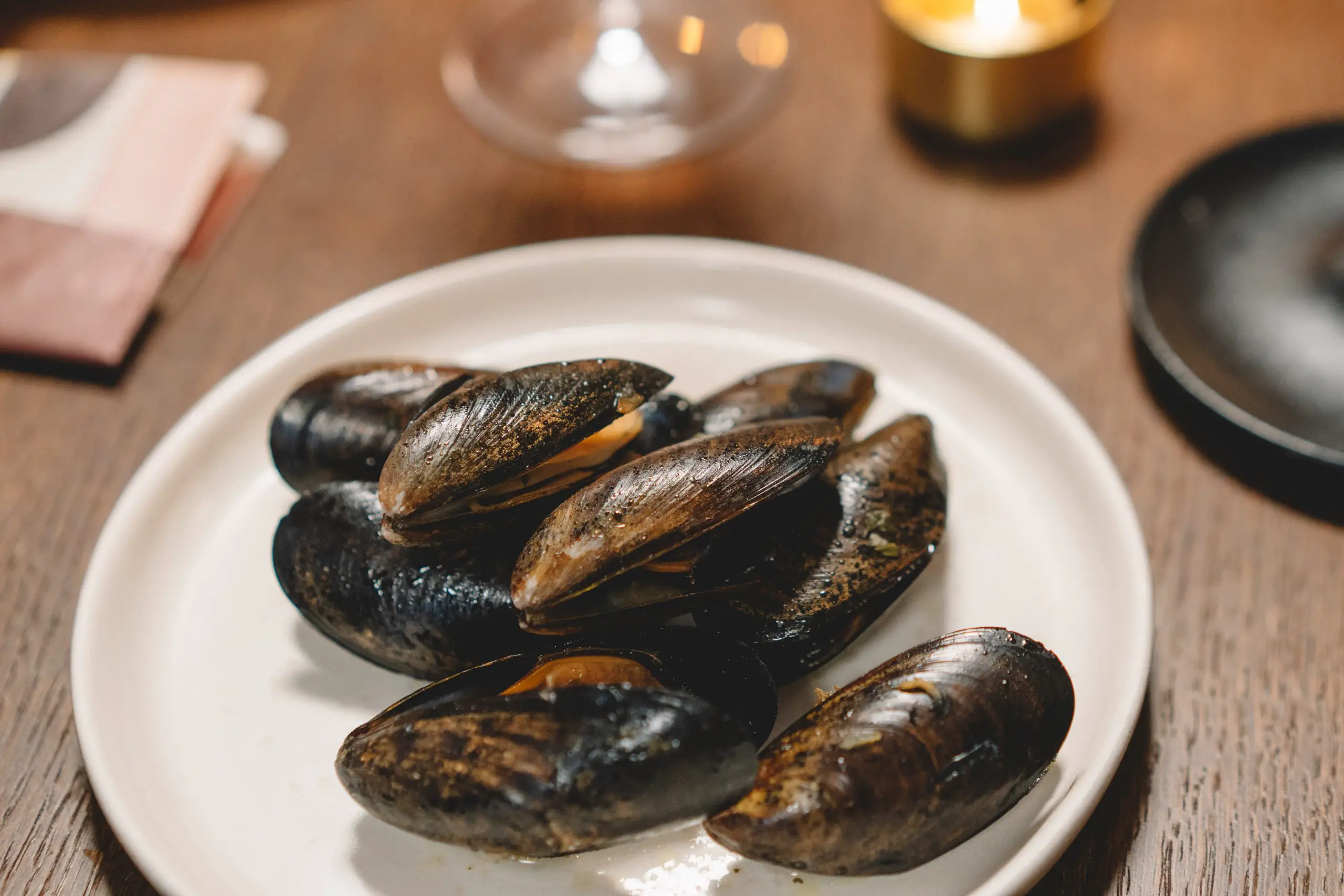Mussels are a popular type of seafood found in various dishes, including soups, pasta, and even as a standalone appetizer. If you have leftover mussels that you want to reheat, you may wonder if it is safe in the microwave.
So let’s get started! This article will discuss the benefits and drawbacks of reheating mussels in the microwave and some tips and guidelines for doing so safely and effectively. Whether you want to save time or prefer the convenience of using a microwave, this article will provide the information you need to decide how to reheat your mussels.

Can you Reheat Mussels in the Microwave?
Overall, it is possible to reheat mussels in the microwave. Still, it is critical to take the necessary precautions to ensure that they are cooked to a safe internal temperature and do not become overcooked or rubbery. It is generally possible to reheat mussels in the microwave, but there are a few factors to consider before doing so.
One of the most crucial considerations when reheating mussels in the microwave is that they are cooked to a safe internal temperature. Mussels should be cooked to an internal temperature of 145°F (63°C) to ensure that any harmful bacteria are killed. If the mussels are not fully cooked or have been stored at an unsafe temperature, reheating them in the microwave may not be enough to kill any bacteria, increasing the risk of food poisoning.
If you are unsure about the safety of your mussels, it is best to discard them rather than risk becoming ill. Another factor to consider when reheating mussels in the microwave is the final texture and quality. Mussels are delicate seafood that, if overcooked, can become rubbery and tough.
To avoid overcooking, use a low-power setting and heat the mussels for a shorter period when reheating them in the microwave. Adding a little liquid to the mussels, such as broth or white wine, is also a good idea to help keep them moist and prevent them from drying out. If you do decide to reheat mussels in the microwave, here are a few pointers to keep in mind:
- Place the mussels in a microwave-safe dish with a little liquid, such as broth or white wine, to help keep them moist.
- Cover the dish with a lid or plastic wrap to help retain heat and moisture.
- Heat the mussels for 1-2 minutes on low power or until thoroughly heated.
- Check the mussels’ internal temperature to ensure it has reached 145°F (63°C).
- Stir the mussels gently halfway through the reheating process to help distribute the heat evenly.
- Following the tips and guidelines in this article, you can successfully reheat mussels in the microwave and enjoy them as a tasty and nutritious meal.
Other Ways to Reheat Mussels
In addition to reheating leftover mussels in the microwave, several other methods are available. Whatever method you use, ensure the mussels are cooked to a safe internal temperature, not overcooked or bouncy. Consider the following options:
Option 1. Using the Stovetop for Reheating Mussels:
The stovetop is a popular method for reheating mussels. Place the mussels in a saucepan or skillet with a small amount of liquid, such as broth or white wine, and heat over medium heat until heated. As with the microwave, check the mussels’ internal temperature to ensure they have reached 145°F (63°C).
Option 2. Using an Oven for Reheating Mussels:
Another prospect is to reheat the mussels in the oven. Place the oven to 350°F (180°C) and place the mussels in an oven-safe dish with a small amount of liquid. Bake for 10-15 minutes, or until the mussels are heated through, covered with foil.
Option 3. Using the Grill for Reheating Mussels:
You can also reheat mussels on the grill if you have one. Preheat the grill to medium and cook the mussels on a foil sheet. Fill the foil with a small amount of liquid, such as broth or white wine, and fold the edges to form a packet. Grill the mussels for 5-10 minutes or until hot.
What is the Shelf Life of Mussels?
The shelf life of mussels is affected by several factors. Mussels have a shelf life determined by how they are caught and stored. Mussels should be stored properly and used within a few days of purchase or cooking to ensure the best quality and safety. The following table summarises the shelf life of mussels under various storage conditions:
- In the Refrigerator: Fresh mussels that have been properly handled and stored can be kept in the refrigerator for several days. Mussels should be stored in the refrigerator at 40°F (4°C) or lower, with a drip tray or covered with a moist cloth to extend their shelf life.
- In the Freezer: Mussels can be frozen to extend their shelf life. Although they can be stored for up to three months, mussels’ quality might suffer. To freeze mussels, wash and debeard them, then place them in an airtight container or tightly wrap them in plastic or aluminum foil.
- At Room Temperature: Mussels should only be kept for short periods because they spoil quickly at high temperatures. Mussels should be stored in the refrigerator or freezer to ensure their safety and quality.
How can you Identify if Mussels have Gone Bad?
There are several indicators that mussels have gone bad and should be discarded. Please pay attention to mussels’ appearance, smell, and texture to ensure their quality and safety. Here are some hints for determining whether mussels have gone bad:
- Shells: Mussels’ shells should be tightly closed or close when lightly tapped. If the shells are open or do not close when tapped, the mussels are likely dead and should be discarded.
- Smell: Mussels should have a pleasant, ocean-like aroma. They are probably spoiled and should be discarded if they have a strong, unpleasant odor.
- Appearance: Mussels should appear shiny and moist. They should be discarded if they are dry, faded, or have a slimy or discolored appearance.
- Touch: Mussels should feel firm when touched. If they are soft or slimy, they have gone bad and should be discarded.
In addition to these indicators, it is a good idea to check the expiration date of the mussels, if available. Even if the mussels do not show any other signs of spoilage, they should be discarded if they are past their expiration date. If you are still determining the excellence of the mussels, it is best to discard them.
What Happens if you Eat Spoiled Mussels?
Eating spoiled mussels can result in food poisoning, which is an illness caused by consuming contaminated food or drink. Food poisoning from spoiled mussels can cause nausea, vomiting, diarrhea, stomach cramps, and fever. In severe cases, food poisoning can cause dehydration, organ damage, and even death.
Food poisoning from spoiled mussels is frequently caused by bacteria, viruses, or parasites that can contaminate the mussels during the growing, harvesting, or handling process. When mussels are consumed, these contaminants can enter the body and cause illness.
To avoid food poisoning from spoiled mussels, store and handle them properly and use them within a few days of purchase or cooking. Please pay attention to their appearance, smell, and texture to ensure that the mussels are fresh and of good quality. If you need more clarification about the quality of the mussels, err on the side of caution and discard them.
If you suspect you ate spoiled mussels and are experiencing symptoms of food poisoning, seek medical attention immediately. Food poisoning can cause dehydration and electrolyte imbalances, which can be fatal if not treated. Your doctor will be able to diagnose and treat your illness, as well as make recommendations for avoiding recurrences in the future.
How can I Use Leftover Mussels?
Mussels that are left over can be used in numerous meals. Mussels left over can make a tasty and filling addition to toast, pasta, stew, salad, and more. Generally, there are many different methods to incorporate leftover mussels into different recipes.
Here are Some Suggestions for What to do with Any Extra Mussels:
- To a pasta meal, add the mussels: Pasta meals can include mussels, such as fettuccine alfredo with mussels or linguine in a white wine and garlic sauce. Serve the mussels hot after tossing them with the spaghetti and sauce.
- Make a stew with chorizo and mussels: To prepare a filling and tasty stew, combine leftover mussels with chorizo, veggies, and stock. For dipping, serve with fresh bread.
- Please include them in a salad: A salad can benefit from the protein-rich inclusion of mussels. For a great and filling supper, toss leftover mussels with your favorite greens, vegetables, and dressing.
- Make a toast with mussels: For a quick and simple appetizer, spread leftover mussels over pieces of toast and garnish with a little butter and fresh herbs.
- Use them in an omelet or frittata: For a great and protein-rich breakfast or brunch, use leftover mussels with other ingredients like cheese, vegetables, and herbs into an omelet or frittata.
Conclusion
Finally, reheating mussels in the microwave can be a convenient and quick way to enjoy leftover seafood. However, precautions must be taken to ensure that the mussels are safely reheated and do not become overcooked or spongy.
You can successfully reheat mussels in the microwave and enjoy them as a tasty and nutritious meal by following the guidelines and tips outlined in this article. Whether you like them in a soup or pasta dish or on their own, properly reheated mussels can be a delicious and satisfying addition to your options list.

